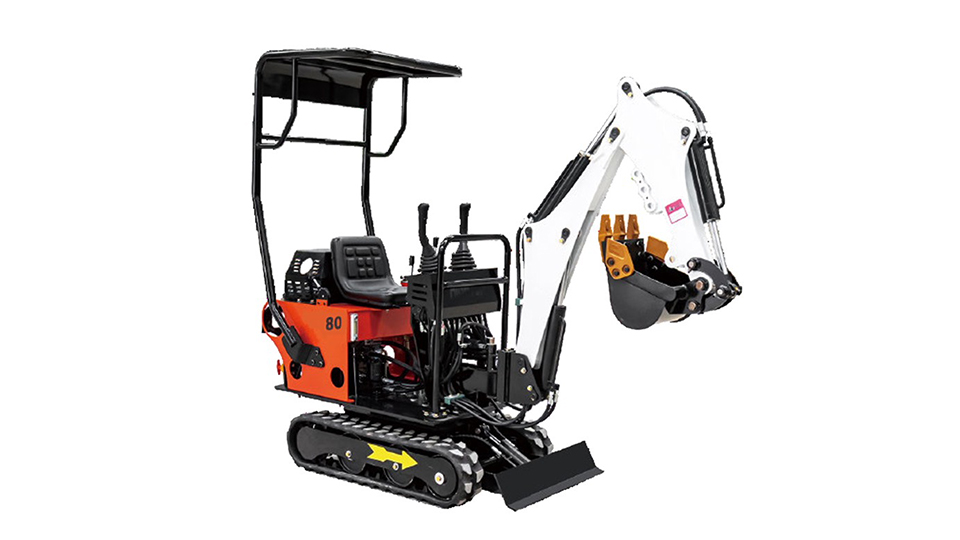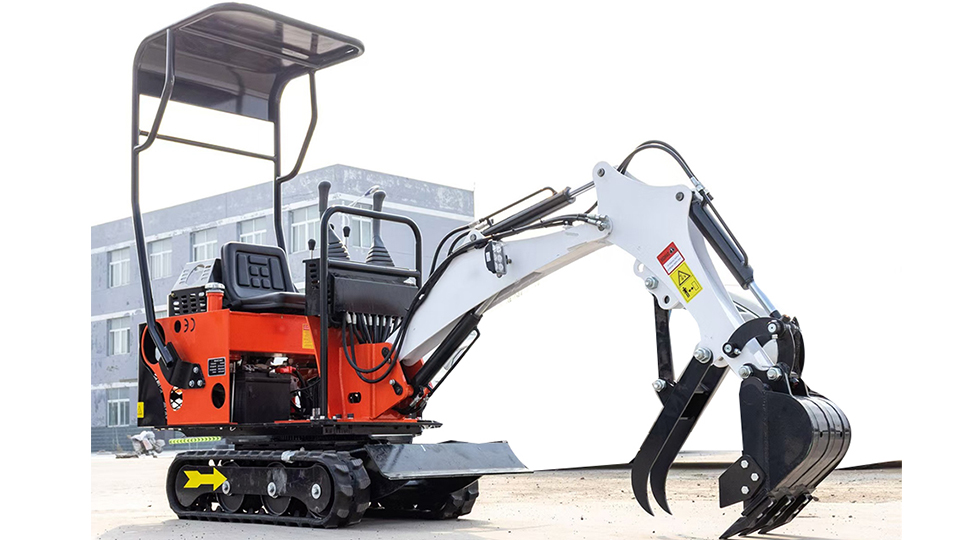Safe Transport of Mini Excavators: A Comprehensive Technical Guide
Mini excavators, despite their compact size, are powerful and versatile machines. Their transport, however, requires meticulous planning and execution to ensure safety and prevent damage. This article provides a comprehensive technical guide on the safe transport of mini excavators, covering essential procedures, equipment, and regulatory considerations.
Pre-Transport Inspection and Preparation
Machine Inspection:
Before transport, a thorough inspection of the mini excavator is crucial. This includes:
Fluid Levels: Check engine oil, hydraulic fluid, and coolant levels. Top up as necessary to prevent damage during transit.
Track/Tire Condition: Inspect tracks or tires for damage, wear, or loose components. Ensure proper tire inflation or track tension.

Hydraulic System: Inspect hydraulic hoses, cylinders, and connections for leaks or damage. Secure all hydraulic attachments and ensure they are properly locked.
Boom and Bucket: Secure the boom and bucket in a transport position. Ensure all locking pins and mechanisms are engaged.
Battery: Check battery terminals for corrosion and ensure they are securely fastened.
Lighting and Signals: Verify that all lights, including brake lights, turn signals, and hazard lights, are functioning correctly.
Leak Check: Visually inspect the machine for any signs of fluid leaks.
Emergency Brake: Verify the emergency brake is functioning correctly.
Securing Attachments:
All attachments, such as buckets, breakers, and augers, must be securely fastened or removed. Removing attachments reduces the overall weight and dimensions, simplifying transport.
If attachments remain on the machine, ensure they are locked in place and cannot move during transit.
Use appropriate locking pins, chains, or straps to secure attachments.
Cleaning:
Clean the mini excavator to remove dirt, mud, and debris. This improves visibility during loading and unloading and prevents the spread of contaminants.
Pay particular attention to the tracks or tires, removing any rocks or debris that could damage the trailer or road surface.
Trailer Selection and Preparation
Trailer Capacity:
Choose a trailer with sufficient weight capacity to handle the mini excavator's weight. Refer to the excavator's specifications and the trailer's Gross Vehicle Weight Rating (GVWR).
Ensure the trailer's deck is long and wide enough to accommodate the excavator's dimensions.
Trailers rated for heavy construction equipment are ideal.

Trailer Condition:
Inspect the trailer thoroughly for any damage, including cracks, rust, or weak points.
Check the trailer's tires, brakes, lights, and hitch for proper functionality.
Ensure the trailer brakes are compatible with the tow vehicle.
Inspect the trailer deck for structural integrity.
Loading Ramps:
Use heavy-duty loading ramps with sufficient weight capacity.
Ensure the ramps are properly secured to the trailer to prevent slippage during loading and unloading.
The angle of the ramps should be gradual to prevent the excavator from bottoming out.
Securing Points:
The trailer should have adequate securing points, such as D-rings or tie-down anchors.
These points must be strong enough to withstand the forces exerted during transport.
Loading Procedures
Positioning the Trailer:
Position the trailer on a level surface to ensure stability during loading.
Engage the trailer's parking brake and use wheel chocks to prevent movement.
Loading the Excavator:
Drive the mini excavator slowly and carefully onto the trailer ramps.
Maintain a steady speed and avoid sudden movements.
Position the excavator centrally on the trailer, ensuring even weight distribution.
Lower the boom and bucket to the transport position.
When possible, load the excavator facing forward, in the direction of travel.
Securing the Excavator:
Use heavy-duty tie-down straps or chains to secure the excavator to the trailer.
Cross the tie-downs to prevent lateral movement.
Secure the excavator at multiple points, including the frame and boom.
Use appropriate tensioning devices to tighten the tie-downs.
Inspect the tie-downs regularly during transport to ensure they remain secure.
If using chains, use proper chain binders, and safety chains.
Tow Vehicle Considerations
Tow Vehicle Capacity:
The tow vehicle must have sufficient towing capacity to handle the combined weight of the trailer and mini excavator.
Refer to the tow vehicle's owner's manual for towing capacity specifications.
Ensure the tow vehicle's brakes, suspension, and transmission are in good condition.
Towing Equipment:
Use a properly rated hitch and ball mount.
Ensure the hitch is securely attached to the tow vehicle's frame.
Use safety chains to prevent the trailer from separating from the tow vehicle.
Verify that all lights and signals on the tow vehicle and trailer are compatible and functioning correctly.
Use a weight distribution hitch if needed.
Regulatory Compliance
Federal and State Regulations:
Comply with all federal and state regulations regarding the transport of heavy equipment.
This includes regulations regarding trailer dimensions, weight limits, and securing requirements.
Obtain any necessary permits or licenses.
DOT Regulations:
Follow Department of Transportation (DOT) regulations for securing cargo.
Ensure that all tie-downs and securing devices meet DOT standards.
Properly mark or flag any overhanging loads.
Insurance:
Ensure that the tow vehicle and trailer are adequately insured.
Consider obtaining additional insurance coverage for the mini excavator during transport.
Driving and Transport Procedures
Driving Practices:
Drive slowly and cautiously, especially on uneven or winding roads.
Allow extra stopping distance due to the increased weight.
Avoid sudden braking or acceleration.
Be aware of the trailer's increased width and length.
Check mirrors frequently.
Avoid driving during severe weather conditions when possible.
Regular Inspections:
Stop periodically to inspect the tie-downs and ensure they remain secure.
Check the trailer's tires, brakes, and lights.
Inspect the mini excavator for any signs of movement or damage.
Unloading Procedures
Positioning the Trailer:
Position the trailer on a level surface for unloading.
Engage the trailer's parking brake and use wheel chocks.
Unloading the Excavator:
Slowly and carefully drive the mini excavator off the trailer ramps.
Maintain a steady speed and avoid sudden movements.
Ensure the ramps are properly secured to prevent slippage.
Post-Transport Inspection:
Inspect the mini excavator for any damage that may have occurred during transport.
Check fluid levels and tire pressure.
Test all functions of the excavator before putting it back into service.
Emergency Procedures
Have a plan in place for emergency situations, such as tire blowouts or trailer malfunctions.
Carry a first-aid kit and emergency repair tools.
Know the contact information for emergency services.
By adhering to these comprehensive guidelines, you can significantly mitigate the risks associated with mini excavator transport and ensure the safe and efficient delivery of your equipment.
Post time:Sep-25-2020
